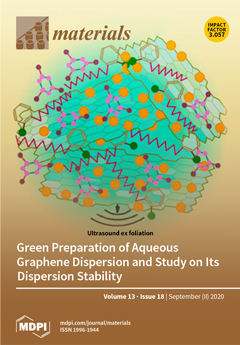Ordinary Portland cement (OPC) production is energy-intensive and significantly contributes to greenhouse gas emissions. One method to reduce the environmental impact of concrete production is the use of an alternative binder, calcium sulfoaluminate cement, which offers lower CO
2 emissions and reduces energy
[...] Read more.
Ordinary Portland cement (OPC) production is energy-intensive and significantly contributes to greenhouse gas emissions. One method to reduce the environmental impact of concrete production is the use of an alternative binder, calcium sulfoaluminate cement, which offers lower CO
2 emissions and reduces energy consumption for cement production. This article describes the effect of adding nanophases, namely belite, calcium sulfoaluminate, calcium aluminum monosulfate (β-C
2S, C
4A
3S, and C
4AS, respectively) on OPC’s properties. These phases are made from nanosubstances such as nano-SiO
2, calcium nitrate (Ca(NO
3)
2), and nano-aluminum hydroxide Al(OH)
3 with gypsum (CaSO
4·2H
2O). The impact of β-C
2S, C
4A
3S, and C
4AS nanophases on the capabilities of cements was assessed by batch experimentations and IR, XRD, and DSC techniques. The results showed that the substituting of OPC by nano phases (either 10% C
4A
3S or 10% C
4A
3S and 10% β-C
2S) reduced setting times, reduced the water/cement ratio and the free-lime contents, and increased the combined water contents as well as compressive strength of the cement pastes. The blends had high early and late compressive strength. The IR, XRD, and DSC analyses of the blends of 10% C
4A
3S or 10% C
4A
3S and 10% β-C
2S cement displayed an increase in the hydrate products and the presence of monosulfate hydrate. The addition of 10% C
4AS or 10% C
4AS and 10% β-C
2S to OPC reduced the setting times, decreased the W/C ratio, free lime, the bulk density, and increased the chemically-combined water and compressive strength. Overall, the results confirmed that the inclusion of the nanophases greatly enhanced the mechanical and durability properties of the OPCs.
Full article






